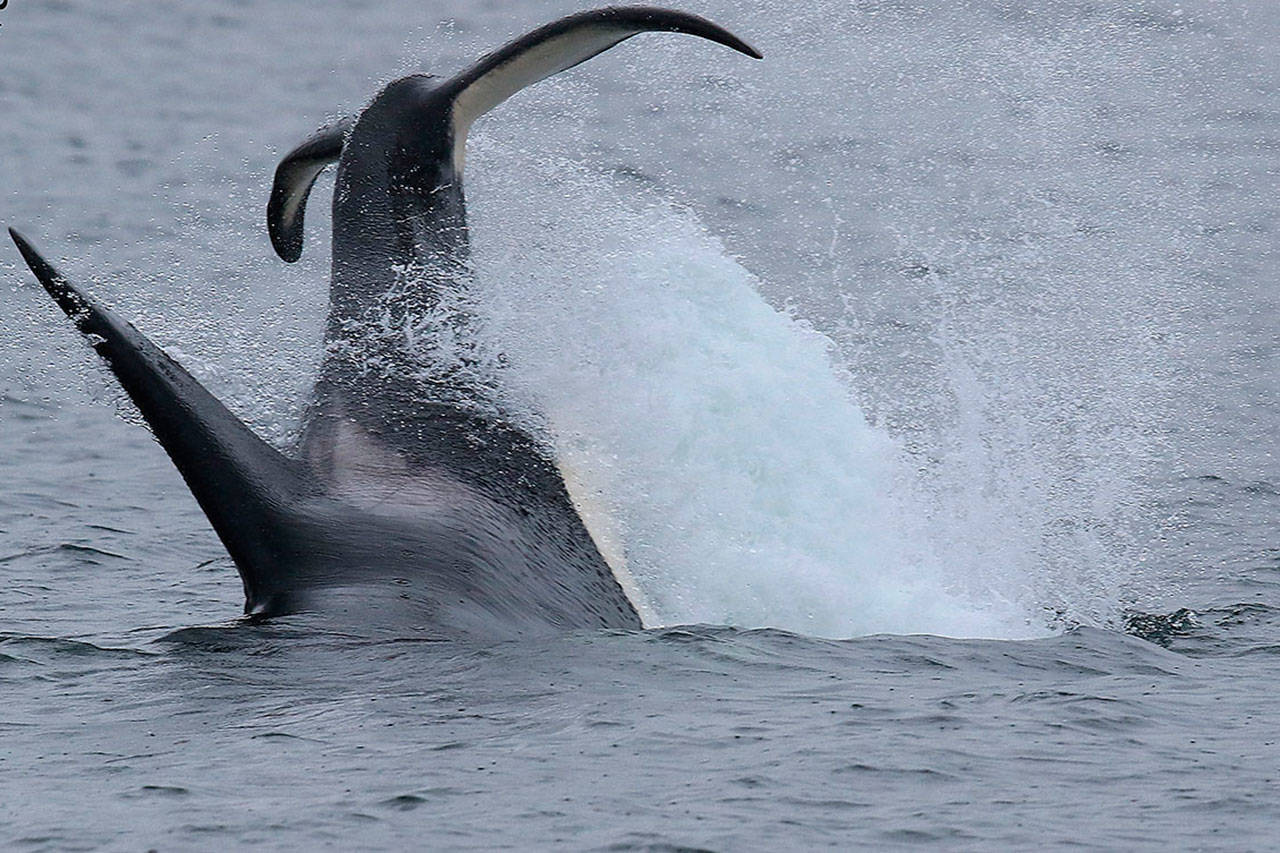Although the whale-on-whale attack witnessed recently south of Whidbey Island garnered much attention, it’s really the location of the incident — not the behavior of the marine mammals — that’s most surprising, some experts say.
“It is unusual to see transients (orcas) feeding on gray whales in the inland waters, though we have had some ramming of our local grays by transient orcas in the past,” said Susan Berta, Orca Network executive director. “For the transients, gray whales are a part of their diet, along with the plentiful seals, sea lions, porpoises and other whales.”
Last Saturday, Puget Sound Express passengers and crew on a whale-watching excursion witnessed a pod of transient orcas feed on a gray whale. While they couldn’t immediately determine if the pod had attacked and killed the whale, a study of the photos taken by on-board naturalist Bart Rulon showed signs that the gray whale had probably been dead for several days, Berta said.
Transient orcas, also called killer whales, differ from the local Puget Sound killer whale pods known as J,K, L that primarily eat salmon. The transient killer whales are also known as Bigg’s orcas and identified by family groups.
Pete Hanke, owner of Puget Sound Express, said two of the company’s vessels were the only boats west of Cultus Bay when they came upon a group of Bigg’s orca, known as family T101 — a mother and three large adult males — circling some sort of prey.
“We had seen this same family an hour and a half beforehand just a few miles southeast at Possession Point on our first whale watching trip of the day, and they were spread out in a typical hunting pattern,” Hanke said.
A body of a gray whale floated to the surface where the killer whales had been diving, then “a bunch of air with fresh blood bubbled out of the gray whale carcass,” Hanke stated in a press release. “Then the whale slowly sank under the water again while the T101s continued to work on their meal.”
“This, in my opinion, is one of the most unusual events I can recall with a killer whale in 34 years of whale watching in the Salish Sea,” Hanke said.
Transient killer whales are known to attack gray whale calves as they migrate with their mothers north from birthing lagoons in Baja, Mexico to their Alaskan feeding grounds. But such attacks have largely been witnessed in California’s Monterey Bay as the gray whales traverse the bay’s deep-water canyon, considered the riskiest stretch of their 10,000-mile round-trip migration.
“For those of us who watch whales in the inland waters, the sight of transients feeding on a gray whale is a very unusual event, whether or not they killed the whale they were feeding on,” Berta said.
The deceased gray whale is not believed to be one of the whales known as the “Sounders,” a group of about a dozen gray whales that divert from the migration path to feast on ghost shrimp around Whidbey and Camano islands for about six weeks in the spring.
Of late, more gray whales have been seen feeding in Saratoga Passage, and they are staying longer than usual. At the same time, the high number of dead malnourished gray whales washing up on beaches along the Pacific Coast migration route continues to concern environmental groups and scientists. Some speculate warmer Arctic waters caused by climate change have disrupted the food chain.
“It is becoming clear the gray whales did not get enough food last summer in the Bering Sea,” Berta said. “They are using up the last of their blubber reserves, and many are not making it all the way back north this year.”
Rulon, a longtime naturalist and professional photographer with whale tours, said he has seen “half-hearted attacks of transient killer whales on some of the regular Sounders in the past but never have we seen an attack succeed.”
It’s speculated the gray whale carcass eaten by the T101 pod might have been a new unidentified gray whale that had been seen in the vicinity of Edmonds and the south end of Whidbey Island over the last week or two, reported as “sluggish, subadult size and skinny.”
Rulon also described the incident “as one of the most unusual encounters I’ve had with our whales in more than two decades of documenting them.”



